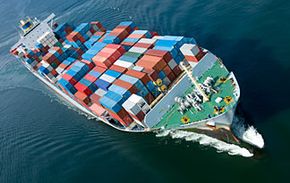Key Takeaways
- Green methods of transporting goods include using inland barges, which are the most fuel-efficient and emit the least carbon dioxide per ton-mile, and freight trains, which are more efficient than conventional trucks and can carry the equivalent of 280 truckloads.
- Hybrid delivery vehicles, like diesel-electric hybrids, are becoming more prevalent in company fleets for their fuel efficiency and reduced emissions.
- The greenest delivery method, particularly in congested urban areas, is foot couriers, who can navigate crowded streets more efficiently than vehicles and produce no emissions other than human respiration.
Kermit the Frog said it best: “It’s not easy being green.” You take the bus instead of driving to work. You dutifully recycle your plastic bottles and soda cans. You even bought a sweater for your dog made from reclaimed cotton.
But what about that new computer you order online? The components are built in Indonesia and shipped to Japan for assembly. Then the computer takes a ride on a container ship across the Pacific to a warehouse in California. Delivery trucks transport crates of computers to distribution centers across the country. And when you click “buy,” FedEx drives the package on a big rig, then a delivery truck straight to your front door. Is it convenient? Yes. Green? Not exactly.
Advertisement
Running on Rivers of Oil and Clouds of Emissions
The unfortunate truth is that the global economy runs on rivers of oil. The supply chain that harvests raw materials from Africa, manufactures components in Asia and assembles products in Europe is a logistical miracle, but it all relies on transportation. Maritime shipping handles over 90 percent of cross-border cargo transportation. Mammoth container ships carry an estimated volume of 7.7 billion tons of cargo a year, according to the International Chamber of Shipping. But each of those container ships burns through thousands of gallons of bunker fuel, a low-grade fuel that contains 2,000 times the sulfur content of regular diesel.
In the U.S., the transportation sector is the second largest producer of carbon dioxide emissions, accounting for 33 percent of total greenhouse gas production, according to the Environmental Protection Agency. Passenger vehicles account for a large portion of those pollutants, but heavy-duty freight trucks -- which only account for 1percent of the vehicles on the road -- create 20 percent of the total greenhouse gasses.
The good news is that the cargo shipping industry is trying to green up its act, and we can do our part by supporting businesses that are trying to lower their carbon footprint. The following is our list of the five greenest methods for transporting goods.
